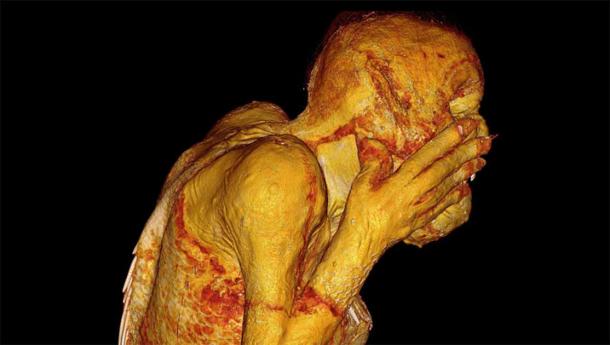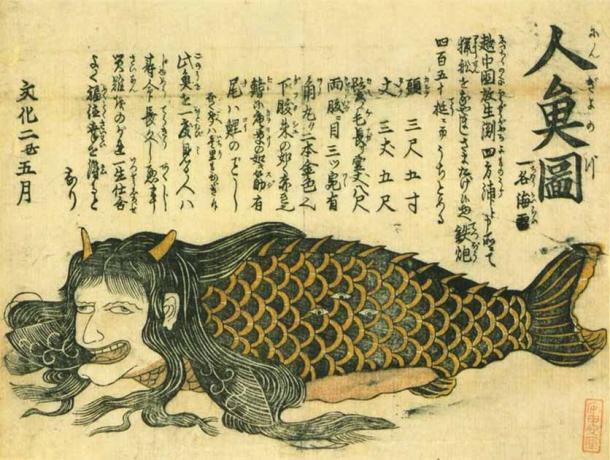Mermaid Mummy at Japan Temple Exposed as Gruesome Man-Made Hoax
Medical tests performed on a mummified mermaid corpse on display at a temple in Japan have been exposed as a hoax, although it isn’t made of quite what was suspected.
The so-called “mermaid mummy” is actually a tiny mannequin, constructed out of a mixture of man-made organic and manufactured materials. Despite painstaking efforts to create a mermaid that resembled Japanese folklore, advanced technology ultimately proved too difficult to deceive.
Scientists from Kurashiki University of Science and the Arts used radioactive dating techniques, X-rays and CT scanning technology to study the mermaid mummy. The results from these tests enabled them to finally uncover the truth about the supposed mermaid which has been on display at the Enjuin temple in the city of Asakuchi, Japan’s Okayama Prefecture, for several decades.
“Based on our analysis and the history of mummy creation in Japan, we can only conclude that the mermaid mummy was probably man-made,” Takafumi Kato, a paleontologist working on the project, said in an interview with Vice World News . Scans of the mermaid mummy have confirmed his hypothesis.

Unlocking the Secrets of the Mermaid Mummy
X-rays revealed no interior structure or bones, while the fake mermaid mannequin did incorporate a mix of fish parts, cotton and cloth. While the jaw and teeth of its monkey-like head were harvested from some type of fish, the lower body had incorporated some fish bones as well. Its arms, shoulders, neck and cheeks were covered with fish scales, yet its upper body features resembled those of a small monkey.
The 12-inch (30 cm) mermaid mummy was said to have been captured in Pacific waters in the 18th century. Nevertheless, radioactive dating tests revealed that it had actually been constructed in the 19th century.
The scientists have concluded that the fake mermaid mummy was actually created by artisans working during Japan’s Edo period , which lasted from 1603 to 1868.
Approximately a dozen alleged mermaid mummies have been found at different times and in different locations in Japan, and all are believed to date to this era. This period was plagued by epidemics of smallpox and measles, among other diseases. The mermaid mummies were possibly crafted as sacred idols and talismans to bring an end to terrible outbreaks.
This particular mermaid mummy was carefully preserved and protected at the Enjuin temple, where it was worshipped by priests and by many locals. It remains to be seen how things change now that the truth of its origins have finally been brought to light.

The Not-So-True Story of the Enjuin Temple Mermaid
The study of the Enjuin temple mermaid was undertaken at the urging of Japanese cultural historian Hiroshi Kinoshita, who is affiliated with the Okayama Folklore Society. Before the study of the object was launched, Kinoshita admitted to the press that he didn’t believe in mermaids and had no illusions about what his study would discover.
Nevertheless, he still felt the study was important, as a way to learn more about how these mummified “mermaids” were actually manufactured.
According to Japanese legend , the mermaid had been captured in a fishing net cast in the sea off the coast of Kochi Prefecture on Japan’s Shikoku Island. The creature’s lower half was all fish, but it had a human-like head covered with thin, wispy hair and pointy teeth, along with the arms and hands of a tiny person.
Its face was permanently locked into what looks like an expression of terror, with its teeth bared and its long-fingered hands held up to the side of its face, framing its head as if to emphasize its fear.
This bizarre escapee from the land of ancient mythology had supposedly been caught sometime between the years 1736 and 1741. This was revealed in a letter dated to 1903, held along with the mummified remains at the Enjuin temple, allegedly from one of the people who’d owned the mermaid in the 19th century. Details about the mermaid’s demise and the process that led to its mummification were sketchy, but at the temple the creature was treated with reverence and respect.
“Japanese mermaids have a legend of immortality,” Hiroshi Kinoshita told The Sun . “It is said that if you eat the flesh of a mermaid, you will never die.” It is not known if anyone actually took a bite out of this particular mermaid while it was on display in Asakuchi. What is known is that temple priests prayed to the mermaid during the Covid-19 pandemic, asking for deliverance and protection.

When Mermaids are Sacred, Who Needs the Truth?
Mermaids, which are known as Ningyo in Japanese, have long been a fixture in Japan’s mythological traditions. They were said to possess golden scales and fish teeth, but with a monkey’s mouth and a charming, flute-like voice.
While mermaids have long been worshipped in Japan, it is believed that they should remain in the sea and not be brought to land. It has been said that catching a mermaid will bring stormy weather, rough seas and other types of disasters. Should a dead mermaid wash ashore, that is supposed to be a harbinger of war.

One famous story from Japanese folklore, the tale of Yao-Bikuni, tells of how the daughter of a fisherman from Wakasha Province caught a mermaid and then fed the creature’s flesh to his daughter. This poor woman stopped aging, became a nun and spent the next 800 years of her life wandering the Earth before the spell was broken and she finally died.
In addition to the apparently man-made creation held at the Enjuin temple, there is another well-known mermaid mummy currently on display at a religious site in Japan. This mermaid is said to be 1,400 years old, and can be found encased behind a glass case at the Tenshou-Kyousha shrine in a cloud-covered forest near Japan’s Mount Fuji .
Considering the underwhelming findings of recent research, it’s doubtful that the shrine’s administrators will permit the same testing methods used on the Asakuchi mermaid mummy . Instead, they will likely strive to maintain the mystery surrounding their mermaid’s history for as long as possible.



